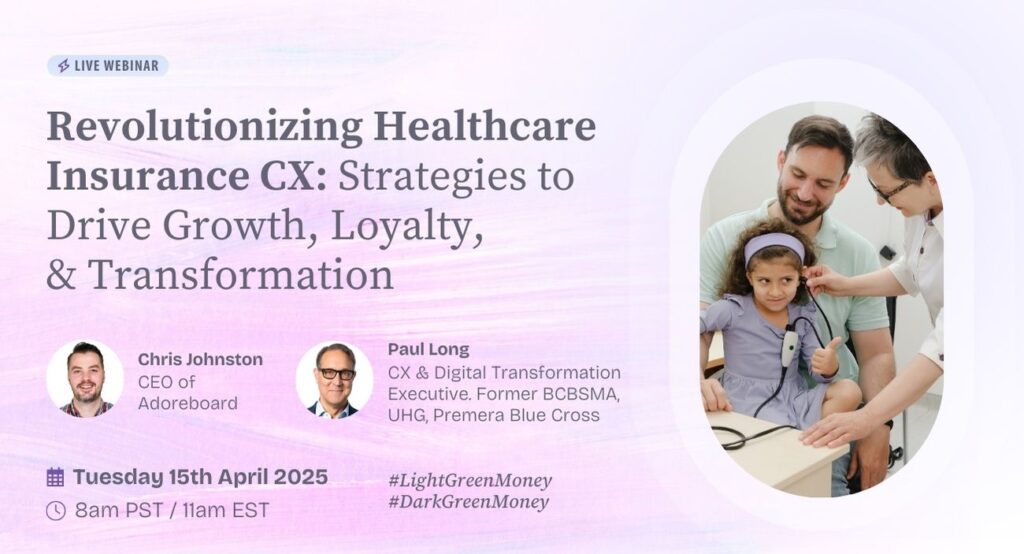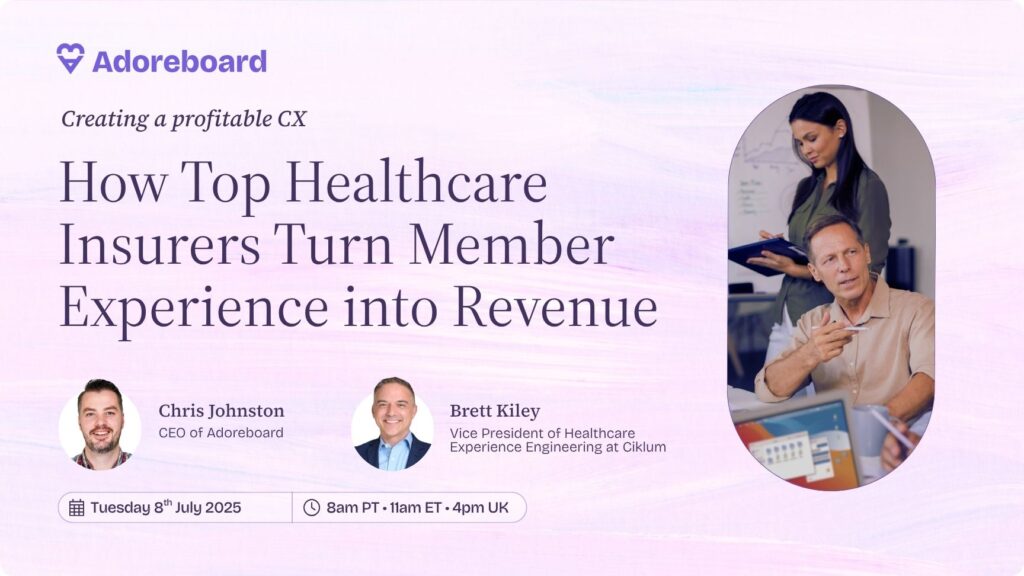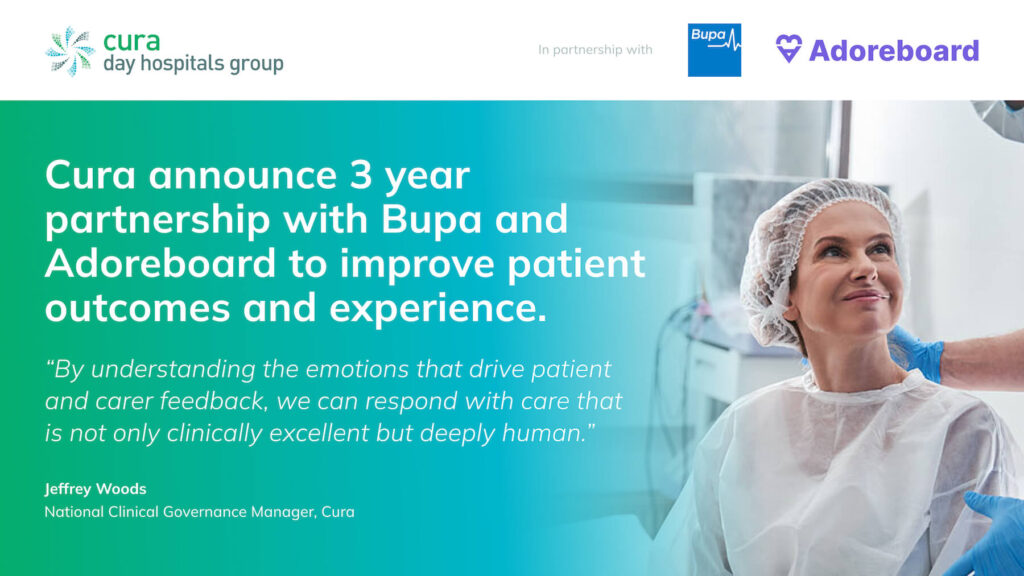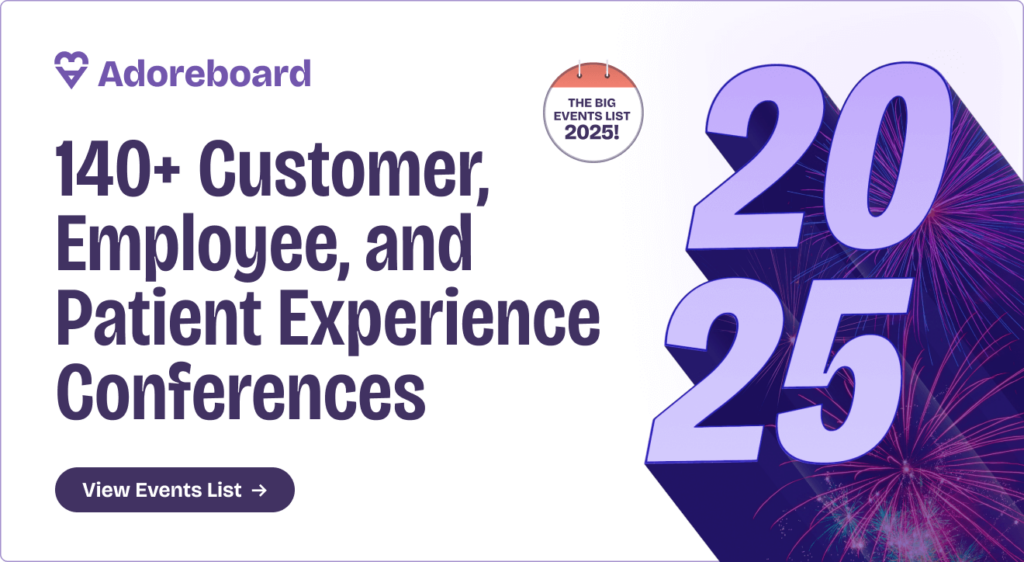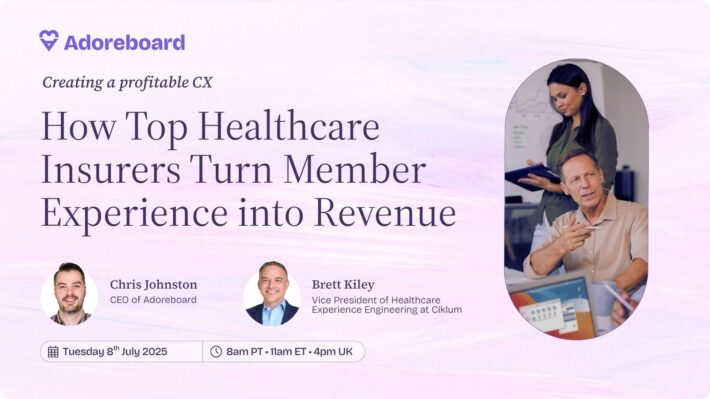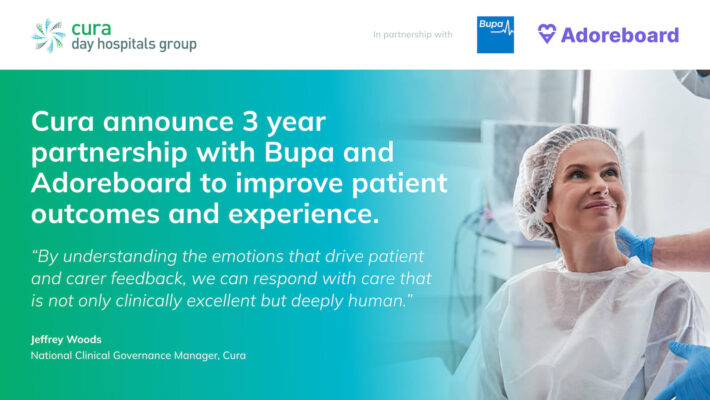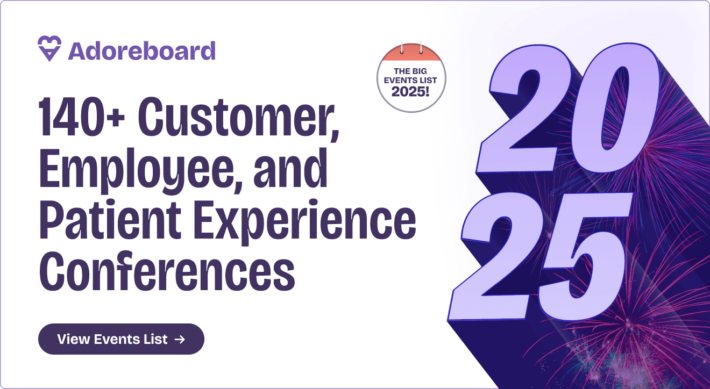In a recent webinar with Adoreboard, Paul N. Long, MBA, former CXO at major healthcare insurers including Blue Cross Blue Shield MA and UnitedHealth Group, shared valuable insights on transforming healthcare through customer experience (CX).
First, a few of Paul’s key accomplishments…
- Managed $41M budget, 11 direct, and 1K+ indirect reports at Blue Cross Blue Shield MA.
- Built new revenue streams within the product portfolio with a target gross margin of over $8M in year one and converted the product group from a cost center to a profit center at Premera Blue Cross.
- Grew NPS adoption from 10 to 100+ lines of business at UnitedHealth Group and improved enterprise NPS by 20+ points by ensuring NPS was actioned.
- Engaged and unified more than 1K team members to embrace a “one team” approach strengthening employee engagement and eNPS scores, eclipsing the enterprise average at BCBS MA.
You can watch the recording below, or scroll down if you prefer to scan over written takeaways.
Here are the key takeaways for healthcare and healthcare insurance leaders…
The Chauffeur Paradox in Healthcare
Paul introduced the concept of “the chauffeur paradox” to illustrate healthcare’s transparency challenges.
Just as early automobile owners relied on chauffeurs who controlled access and maintenance, healthcare today maintains a “veil” between providers and patients, creating confusion and inefficiency.
There is a veil between you and me if you are the consumer or the patient, and I am the health system or health insurance provider. It is incredibly confusing and incredibly hard to understand.
As with automobiles, this veil will lift when technological innovation meets consumer demand for simplicity and transparency.

Paul shared some interesting (& rather scary!) statistics ☝️.
Treating Experience as the Product
A fundamental shift Paul advocates is viewing customer experience itself as the product. This means:
- Understanding jobs to be done – Recognizing what customers are truly trying to accomplish (not just “logging into a website” but resolving an issue or managing their care)
- Measuring what matters – Moving beyond traditional metrics to understand the complete customer journey
Paul shared a powerful example where his team discovered that “first call resolution” metrics were masking serious issues with digital channels.
By reframing their measurement to “first contact resolution” across all channels, they identified critical failures in their web and mobile interfaces.
Dark Green vs. Light Green Money
Paul emphasized the importance of connecting CX initiatives to tangible business outcomes using two types of value:
- Light Green Money: Brand perception improvements, higher satisfaction scores, and better NPS.
- Dark Green Money: Cost reduction, revenue growth, and improved health outcomes.
For instance, fixing digital channels to prevent unnecessary calls is “dark green money” because it lowers operational costs.
An even more powerful “dark green money” example Paul shared was a diabetic foot monitoring mat that detects ulcers five weeks before rupture, potentially preventing $100,000 amputations and saving lives (50% mortality rate for foot amputations).
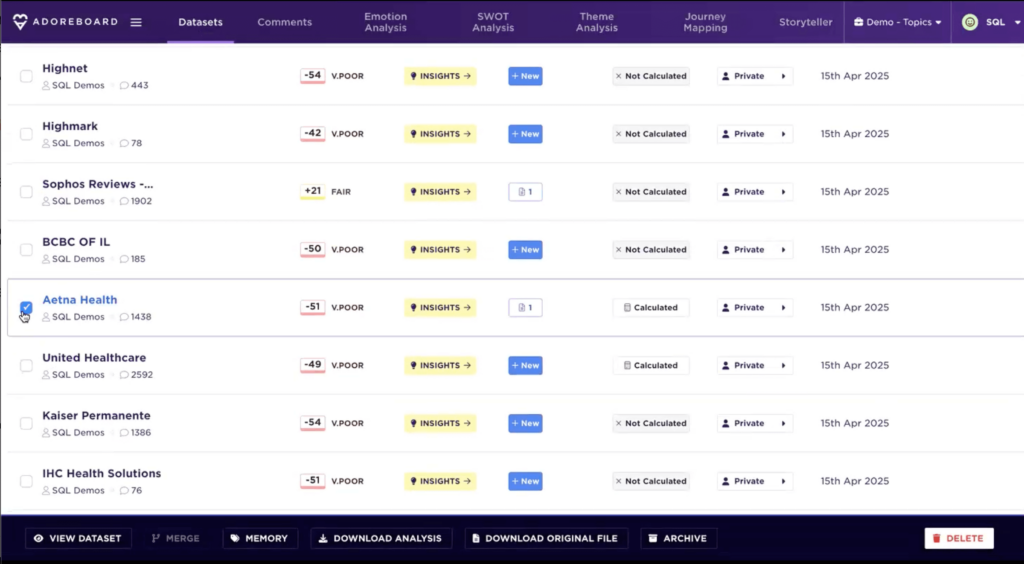
🤔 Did You Know?
In addition to traditional satisfaction metrics like NPS, Adoreboard has a “Revenue at Risk “(RaR) metric as part of it’s insights platform. Book a quick demo if you’d like to learn more! 💕
Cross-Functional Experience Transformation
Paul stressed that CX cannot be a “side of desk” initiative in healthcare:
It’s one of the quadruple aims of healthcare, so it cannot be side of desk. It has to be a strong leader that can navigate the entire organization.
He advocated for:
- Dedicated experience leaders with executive presence who understand product, operations, and behavioral psychology
- Cross-functional agile teams that break down silos between technology and business units
- Treating experiences as “ever-evolving products” rather than one-time projects
The Path Forward: Three Key Takeaways
- Healthcare is at an inflection point where technological innovation, cost pressures, and demand for simplicity will inevitably lift the veil between providers and patients
- Focus on one experience that addresses the quadruple aim: increasing access to care, improving outcomes, lowering costs, and enhancing experiences
- Create concise metrics that measure what truly matters to patients, then organize cross-functional teams to deliver on those metrics
As healthcare faces unprecedented challenges, customer experience emerges as the transformational lever that can simultaneously improve outcomes, reduce costs, and enhance satisfaction.
Organizations that embrace this approach will be positioned to thrive in healthcare’s next era.
